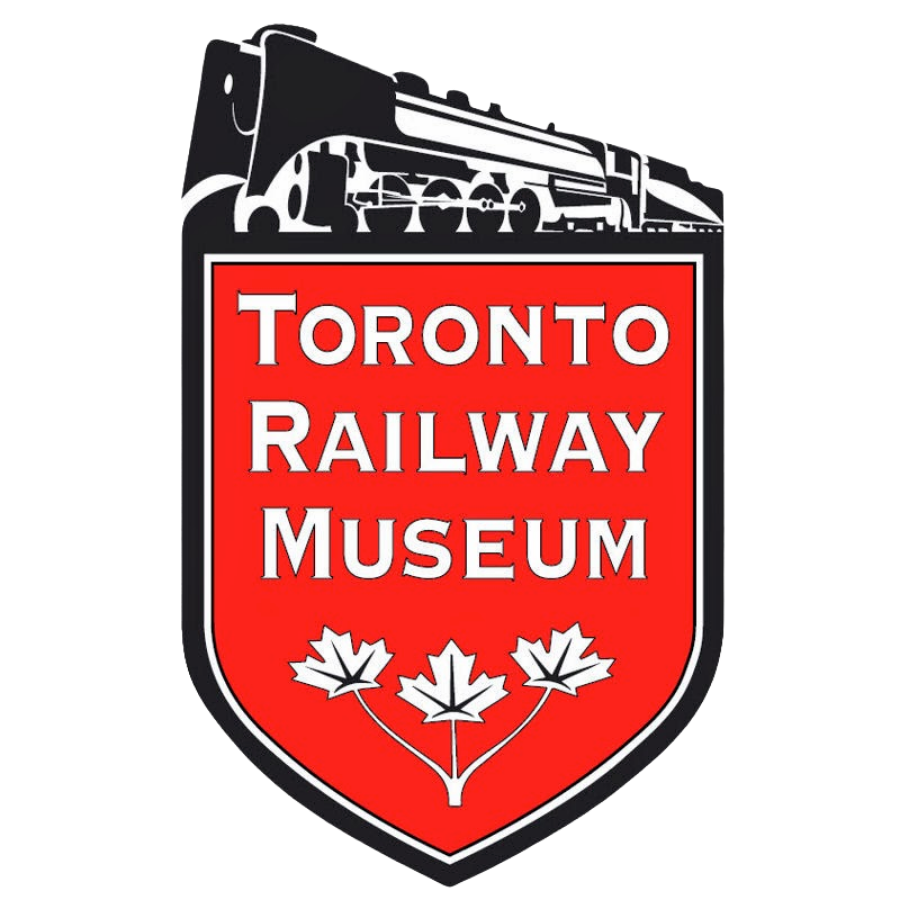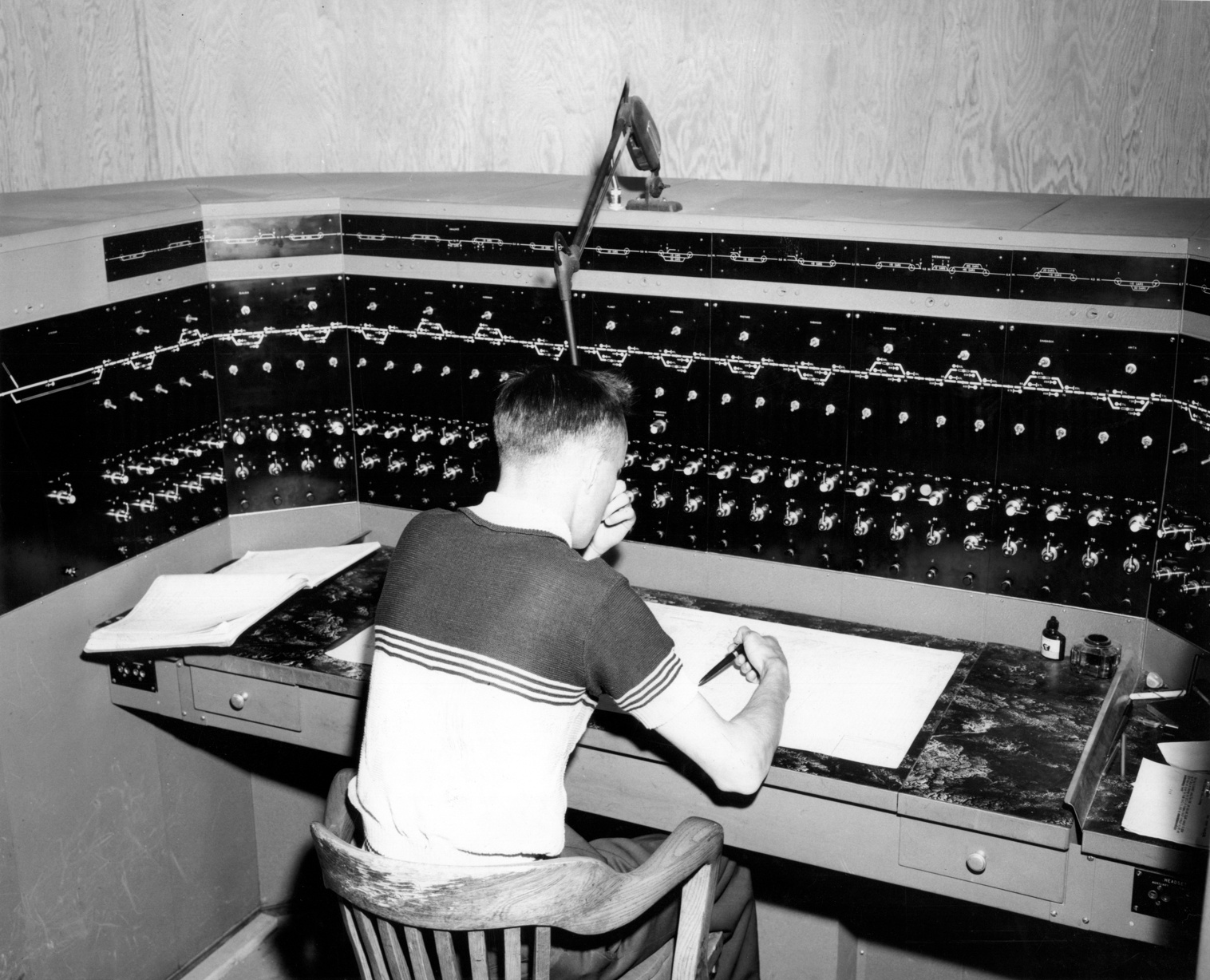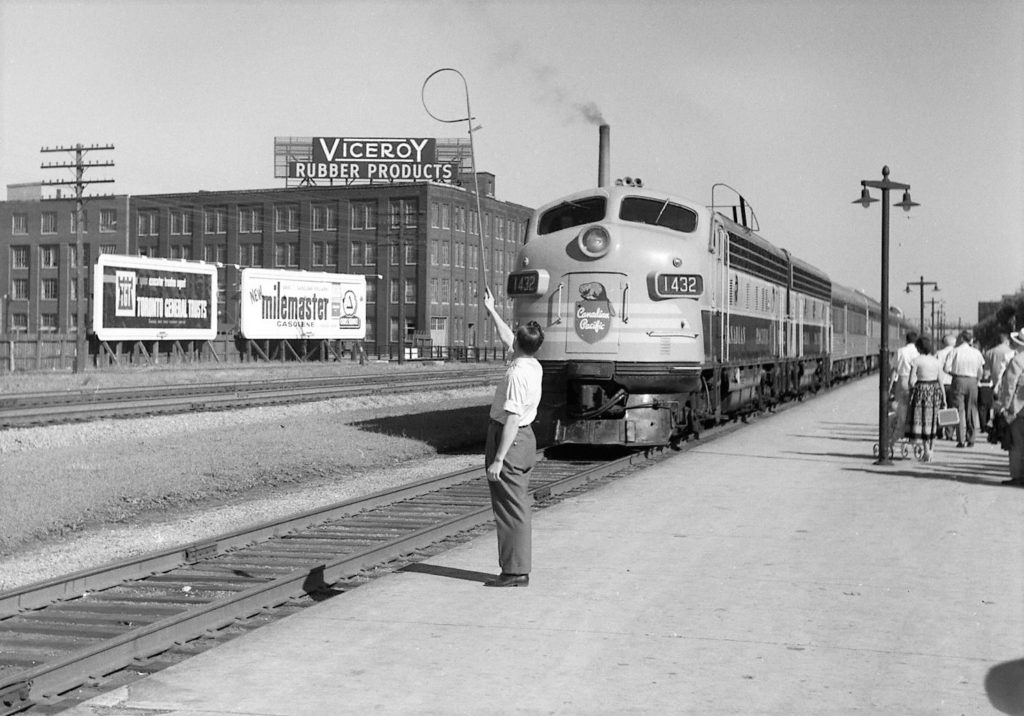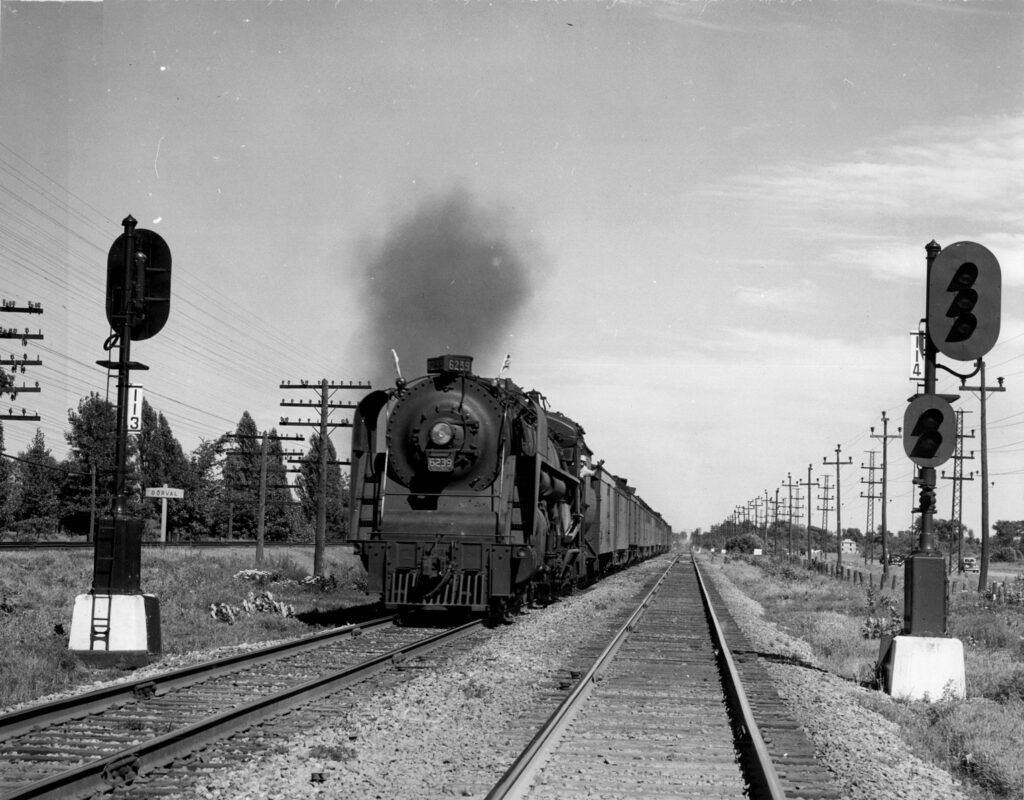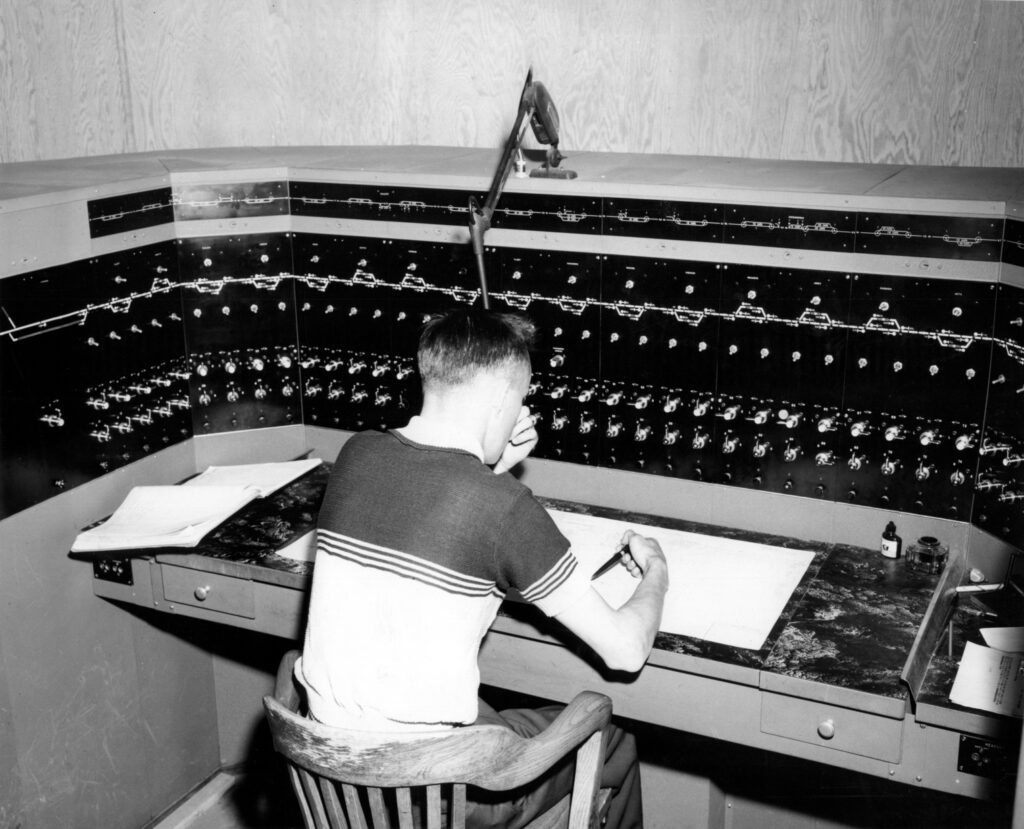What is CTC?
Centralized Traffic Control (CTC) is a form of railway operation that was developed in North America in the early 20th century. Its purpose was to improve safety and efficiency by replacing the ancient system of Train Order Operation (TOO) which had been used in some form since the inception of railways in Canada. Under this system, trains operated according to a strict timetable and any deviations were made known to train crews through paper train order forms. A railway employee, often (but not always) a passenger station agent, would write the orders onto the train order form and hand it off to a train crew. This was most often done using a “train order hoop” or similar pole-like object while the train was in motion – a difficult process that became time consuming if the crew missed and had to try again.
We have photographic evidence of primitive railway signals being used in the Toronto area as early as 1860. The invention of the failsafe track circuit in 1872 made railway signaling considerably more safe and reliable, and directly led to the concept of Automatic Block Signaling (ABS) which was first implemented in 1893. While this system marked a considerable step forward in railway signaling, it was unable to fully replace Train Order Operation and the two often existed alongside one another here in Canada. The first system to replace it was Centralized Traffic Control, which was first developed by the General Railway Signal Company of Rochester, New York and implemented on the New York Central Railroad in 1927. The first CTC systems began to appear in Canada during the 1950’s. This system allowed for all switches and signals within a given area to be controlled remotely by a Train Dispatcher or Rail Traffic Controller (RTC), who communicated directly with train crews via two-way radio.
History of the Belleville Board
On January 28th, 1958, the Canadian Pacific Railway’s new CTC signal system began to take over control of train movements at Glen Tay, Ontario, as passenger train number 35 from Ottawa made its way toward Toronto. Throughout 1958 work would continue installing the CTC system made by General Railway Signal. Sixteen sidings of 60-80 car lengths were replaced with 8 sidings of 150 car lengths on the Belleville Subdivision from Glen Tay to Trenton, a distance of 87.1 miles. By April 26th, 1959, the new signal system was completed to Trenton, approximately halfway between Smiths Falls and Agincourt (Toronto). It was extended through to Agincourt by April 30th, 1961. This installation of nearly 200 miles of CTC was the largest to date on the system, with only small segments at 10 other locations, mainly in terminals. It replaced an earlier ABS system that was originally established on Canadian Pacific’s Oshawa and Belleville subdivisions in the late 1920’s. The “nerve center” of this new CTC system – the CTC machine colloquially known as the Belleville Board – was located inside Toronto Union Station. The machine’s interface included miniature levers and push buttons which allowed the dispatcher to control all signals and switches of the Belleville Subdivision remotely. In a sense, this system can be viewed as similar to that of the one inside Cabin D but on a much larger scale. The Belleville Board was retired in 1990 when the RTC positions in Union Station were relocated to Calgary, Alberta. Pieces of the Belleville Board were sold to various collectors after its retirement. TRHA volunteers were able to track down and acquire the pieces to reassemble it. The individuals involved in its preservation and subsequent restoration were James A. Brown, Wendy Budden, L. Bruce Chapman, Neville Fairclough, Heather A. Fear, Douglas W. Hately, Peter J. Landry, and John F. Mellow. John Mellow worked the board from 1968 to 1978 while an employee of Canadian Pacific. The Belleville Board is currently on display on the lower floor of Cabin D which is occasionally opened to the public during the summer months.

